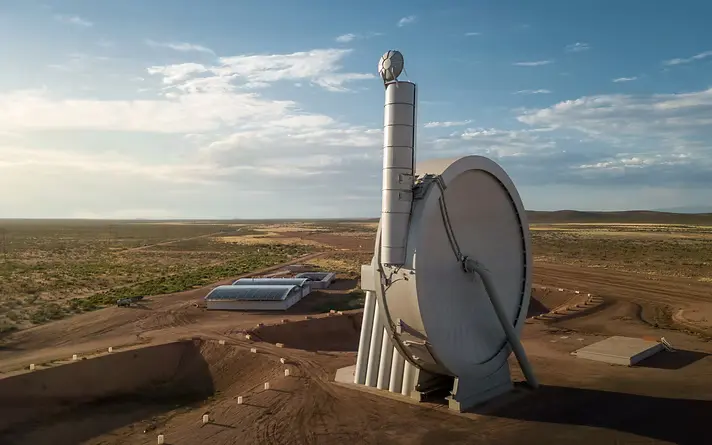| Summary |
|
A US company developing an alternative to rocket launches has drawn international attention, with China warning the technology could worsen congestion in Earth’s orbit. SpinLaunch, based in California, is building a centrifuge system that hurls satellites into the upper atmosphere before a small rocket stage carries them the rest of the way.
The company says it could cut costs by up to ten times and reduce emissions by 90 percent, but its plan for frequent launches has raised questions about safety in space.
At its test site in New Mexico, SpinLaunch built a 108-foot rotating arm inside a vacuum chamber. The machine spins at high speed, accelerating payloads to more than 5,000 miles per hour (six times the speed of sound) before releasing them. A small rocket engine then provides the final push into orbit. Unlike traditional rockets, which require tons of fuel, the system runs on electricity.
The economic promise is significant. Conventional launches cost tens of thousands of dollars per kilogram, but SpinLaunch says it can bring that down to just a few thousand. The approach also avoids leaving discarded rocket stages in orbit, which are a major source of space debris.
Because of the intense forces involved, SpinLaunch has developed specially designed flat, disc-shaped satellites weighing up to 200 kilograms. Chinese officials have called them “pancake satellites.” They could deliver broadband internet, Earth observation, and other services, but China has voiced concern that mass deployment could add to already crowded orbital traffic.
The company has carried out more than 30 suborbital tests since 2021. A NASA payload flew on one of them in 2022, helping to prove the design’s resilience. SpinLaunch expects to begin orbital launches in 2026 and eventually scale to five launches per day.
The firm also secured $30 million in new funding to accelerate its plans. The round, led by ATW Partners with support from Kongsberg and other existing backers, will help build its Meridian Space constellation, a broadband satellite network planned for low-Earth orbit.
The first customer connections are expected in the second half of 2026. SpinLaunch has also signed a lease for land in Alaska, where it intends to build its first orbital accelerator, and has made leadership appointments to guide the move toward commercial operations.
Reaction online has been mostly positive, with the company highlighting the funding as a boost for satellite communications. But international agencies, including NASA, the European Space Agency (ESA), and the UN’s Office for Outer Space Affairs, have stressed that growing satellite constellations will require stricter coordination to avoid collisions.
SpinLaunch is betting that its system can deliver cheaper and cleaner access to orbit while operating its own constellation. The debate over how to manage an increasingly crowded space environment, however, is far from over.

